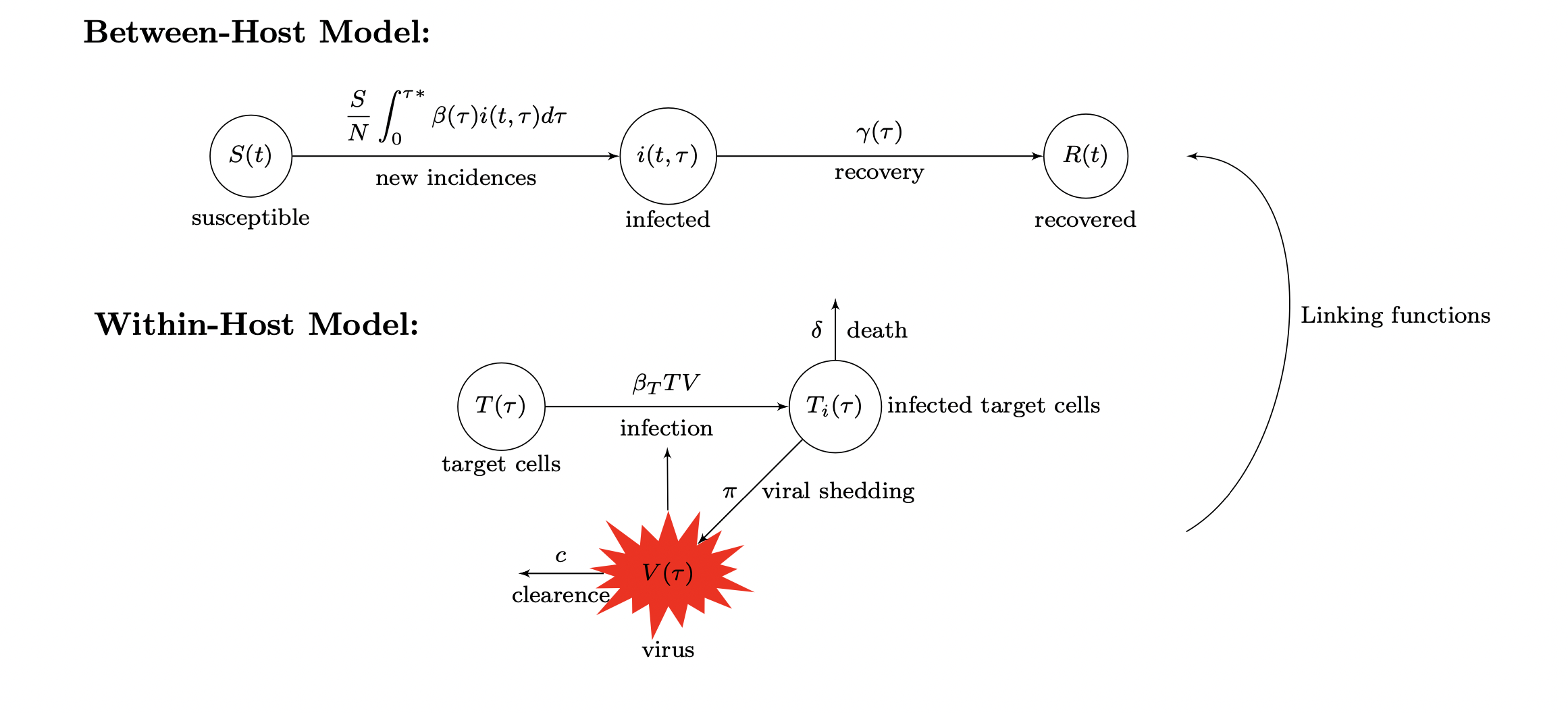
Biological processes occur at nested scales of organizations and infectious diseases are not an exception. Pathogen reproduction, transmission and evolution are processes that span several scales of biological organization, such as intercellular, within-host and population scales. In classical (ODE) epidemiological models, the host is modeled as "infectious" or "recovered", despite the fact that infected host transitions through several levels of infectiousness while its immune system is fighting the pathogen. Recently, researchers have been working on closing this gap between immunology and epidemiology, terming this new merged field as immuno-epidemiology. Here, I will summarize our work on coupling within-host immune dynamics with between-host infectious disease models.

\
We performed both structural and practical identifiability analysis for the within-host immune model and the between-host Rift Valley Fever (RVF) model in the following paper. We developed an immuno-epidemiological model of vector borne disease RVF through "nested" modeling approach where the infected host's immune response is linked to the epidemiological model of the infectious disease through epidemiologically important parameters such as transmission, virulence and recovery.
Necibe Tuncer, Hayriye Gulbudak, Vincent Cannataro, Maia Martcheva, "Structural and practical identifiability issues of immuno-epidemiological vector-host models,"
One of the key outcomes of this research is that the practical identifiability improves when you fit within-host model and the between-host model simultaneously. Here are the figures of the fitting results.